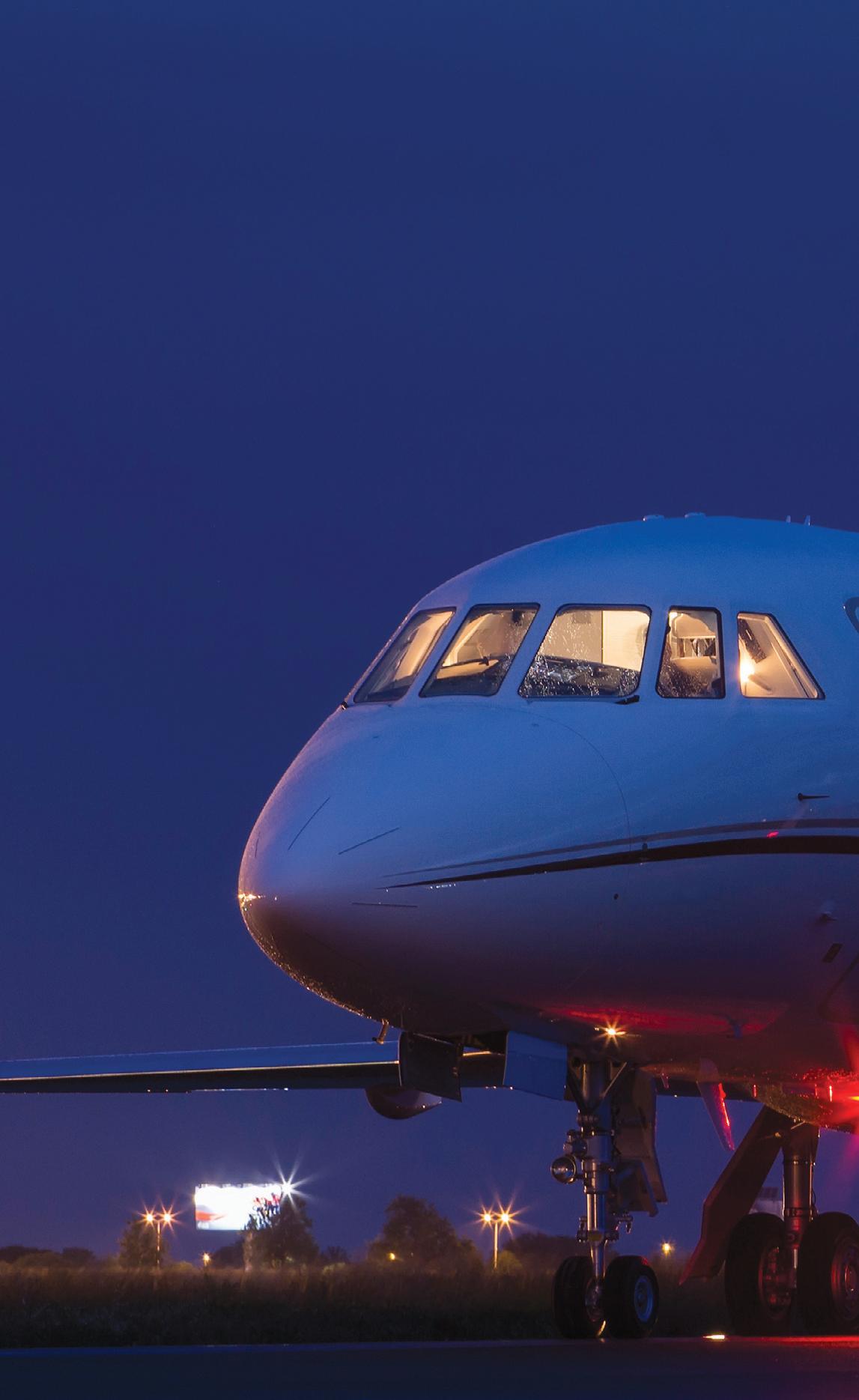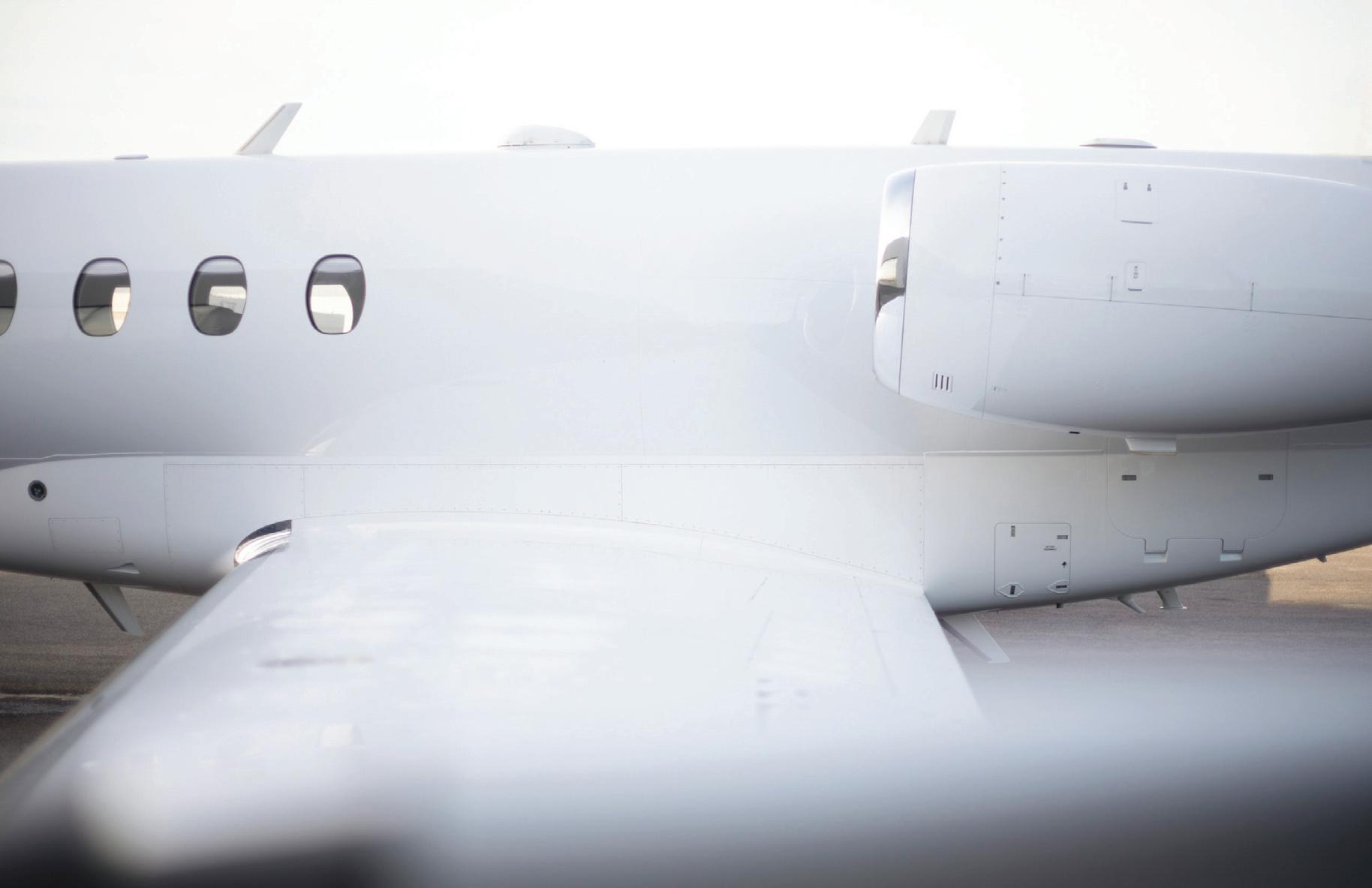
5 minute read
Private Jets: What’s the Most Important Feature?
What would you say sways the balance when it comes to choosing a private jet? Do range, speed, cabin, or operating costs matter more? René Armas Maes provides a model for buyers to select the best jet for the mission, based on all the best features…
When utilizing business jets, passengers tend to rank aircraft features and attributes differently. This means that the manufacturers need to consider regional perceptions and differences in the aircraft they build.
Advertisement
As an example, cabin size is a key feature for many Business Aviation users in the Middle East and Russia, while in Latin America cabin size doesn’t feature in the top three features, whereas cost does.
Generally speaking, though, several surveys on the subject agree that worldwide, aircraft range, speed, cabin features and amenities are considered to be important, as is operating costs, and more. We’ll review several key features of business jets to help buyers establish which is the most important to them… Range
Existing aircraft owners and first-time buyers alike will often consider range to be a leading feature in the aircraft they operate/plan to buy. Although an aircraft’s range is often at the front of a buyer’s mind when they’re benchmarking possible jets for their mission need, while it’s important, range cannot be considered as a separate metric in the decision-making process.
Range should be considered alongside a number of other metrics when buyers are comparing multiple business aircraft. For example, an Ultra-Long-Range jet, such as a Bombardier Global 6000, can fly 6,000 nautical miles but its Direct Operating Cost (DOC) is 1.9 times higher than a Super Mid-size jet capable of flying 4,000 nautical miles.
The question buyers should ask is whether they really need to buy a 6,000nm-range jet if less than 20% of their travel requirements demand such range.
Where a shorter range aircraft is adequate for 80% of the mission need, it’s more likely to make better financial sense to build a fuel stop into the 20% of trips requiring greater range, use ad-hoc charter services, or buy a block of charter hours with a jet card to achieve those longer range missions.

Speed
We all want to get to our destination as quickly as possible, ensuring our waking hours are spent as productively as possible. Unsurprisingly, speed has always been a key feature and is often upheld as a differentiator when manufacturers pitch their products to potential aircraft buyers. Indeed, speed ranks in the three most-important features to existing and would-be business aircraft users.
The Cessna Citation X was famously known as the world’s fastest civil aircraft when it was first produced (before the introduction of the Gulfstream G650ER). It was capable of reaching Mach 0.92, and offered a range of over 3,000nm at normal cruising speeds, with four passengers aboard.
Through its early marketing, Cessna focused on the Citation X’s ability to travel one mile every six seconds, and its ability to cut 30 minutes off a US East coast to West coast flight. However, the Citation X consumed 350 gallons of fuel per hour, and its direct operating cost exceed $5,000/hour, whereas other business jets offering 3,000-4,000nm range average $3,900 per hour. So in this case, speed came at a cost that buyers needed to justify through other capabilities offered by the jet that made it the ideal fit for the mission.
Essentially, similar to range, while some operators may be able to justify the purchase of the quickest jets, speed cannot be considered as the only feature in a buying decision, especially at times when fuel prices are skyrocketing. Instead, it should be analyzed as a part of the wider package. Cabin Size, Amenities & Technology
A plush interior offering enough headroom to stand up, and width to stretch and move around comfortably aboard the aircraft, are valued by most private jet customers – especially those shopping the Super Midsize through Ultra-Long-Range Jet markets. Once again, though, the larger the cabin the higher the DOC and acquisition costs (generally speaking).

As an example, when benchmarking selected Very Light Jets and Light Jet models, fuel costs represented 46% of the total DOC. Other costs include maintenance costs (including parts and labor), engine reserves, auxiliary power unit costs (if applicable), and other miscellaneous expenses, such as crew expenses, catering, cabin supplies, landing and parking fees.
Figure 1 benchmarks seven twin-engine business jets in the Very Light and Light Jet segments, focusing on DOC per seat mile, with an assumed fuel cost per gallon of US$7.5. The results are interesting if one considers missions up to 2,000nm as the Phenom 300E is the least expensive to operate from the study. However, if the typical mission requirement was up to 1,550nm, then the Cessna Citation M2 Gen2 offers better economics.
What’s the Most Important Feature?
Non-stop routing, the opportunity to shrink door-todoor travel time, and a positive impact on productivity during travel are key features demanded by today’s Business Aviation users. In fact, speed and range rank among the most-valued features by buyers evaluating their next acquisition.
However, savvy buyers should focus on multiple metrics, discerning the ‘must have’ features from the ‘nice to haves’, all the while dissecting the numbers based on a sound analysis of their travel history (average stage length, typical loads, most common destinations, and special airport performance requirements, etc.).
Placed in the context of capital expenditure requirements, annual operating budget, and financial return mandate, buyers who do the appropriate groundwork will soon establish the factors that tip the balance in favor of one jet over another, and enjoy many years of flying with the perfect model for their flight needs. ❚
RENÉ ARMAS MAES
is vice president, Commercial at Jet Link International LLC and an international consultant with a broad experience in business aircraft sales. He has developed multiple analyses and studies for a number of US Fortune 500 companies and Venture Capital firms, and participated as keynote speaker at a number of business aircraft conferences.
UNDERSTAND AIRCRAFT OWNERSHIP BETTER with AvBUYER.com










